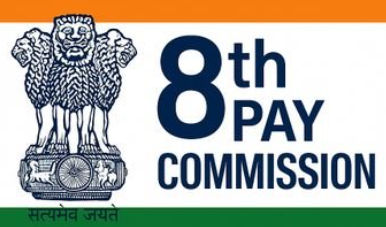
The long-awaited 8th Pay Commission has become a major concern among India’s central government employees and pensioners. Despite widespread expectations that it would be announced in May 2025, there has been no official word from the government as of June, leaving over 35 lakh employees and 67 lakh pensioners in uncertainty. The delay is particularly frustrating because there hasn’t even been a formation of the commission or any announcement regarding its Terms of Reference (ToR), which are necessary to define its scope and responsibilities. This delay has led to rising anxiety within government employee unions and associations. The last Pay Commission, the 7th, was announced in 2014 and implemented in January 2016, giving the government a two-year window. However, with half of 2025 already over, the absence of any movement on the 8th Commission has raised serious concerns.
Several factors are contributing to this delay. Firstly, the slow pace of bureaucratic processes is a major reason. The government has yet to even set up the commission or define what it will actually do. Secondly, there is immense financial pressure due to high expenditure on election-related subsidies and large infrastructure projects, meaning that a massive increase in salaries and pensions could seriously widen the fiscal deficit. Thirdly, there are political calculations at play. With the year 2026 expected to be politically significant, the government may be strategically delaying the announcement until the time is right from an electoral standpoint.
Despite these challenges, there is much speculation about what changes the 8th Pay Commission could bring. One of the most closely watched factors is the fitment factor, which was set at 2.57 in the 7th Pay Commission and increased the minimum salary from ₹7,000 to ₹18,000. This time, experts believe it could be between 2.5 and 2.86. If the fitment factor touches 2.86, the minimum salary could jump to ₹51,000. However, a more realistic range is between 2.6 and 2.7, which would raise the minimum salary to ₹40,000–₹45,000.
Another important aspect is the Dearness Allowance (DA), which helps employees cope with inflation. As of January 2025, the DA has already reached around 55%. Normally, when a new pay commission is implemented, the DA is merged with the basic salary, leading to a noticeable increase in total compensation. However, after the merger, the DA starts again from zero. The DA is revised every six months to keep pace with inflation, offering at least some relief even if the Pay Commission is delayed.
Considering all this, it seems unlikely that any salary revision will be implemented by January 2026. Even if the commission is formed by the end of 2025, drafting the report, reviewing its recommendations, and implementing them would take time. However, there is still a silver lining for employees and pensioners. Once implemented, the new salary structure is expected to apply retrospectively, meaning employees could receive arrears or back pay from the intended start date.
In conclusion, although the 8th Pay Commission has not yet been announced, expectations remain high. The delay is frustrating but not surprising given the various bureaucratic, financial, and political complexities. Government employees and pensioners can take some comfort in the hope that the hike, even if delayed, will eventually happen—possibly along with pending salary arrears.
Disclaimer:
This article is based on publicly available reports and expert analysis. It is not an official government announcement. Readers should wait for formal confirmation from the Government of India for exact details.




